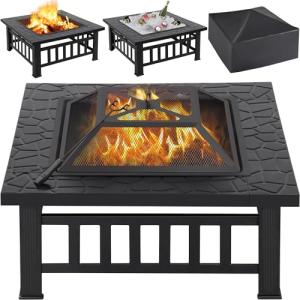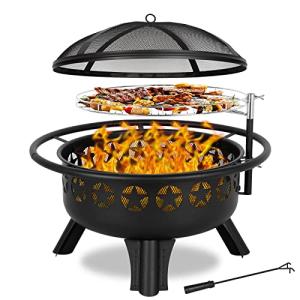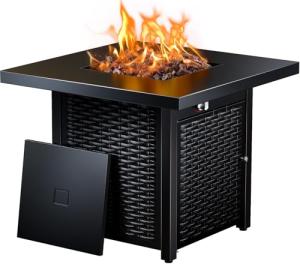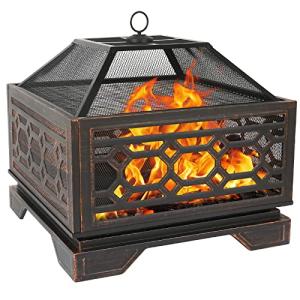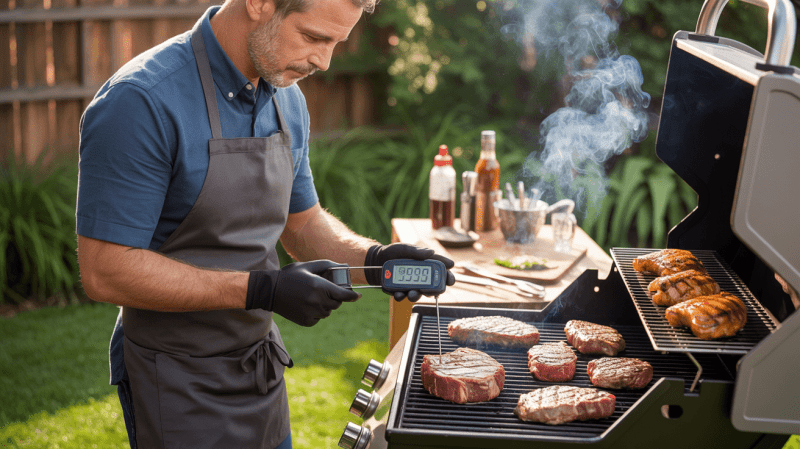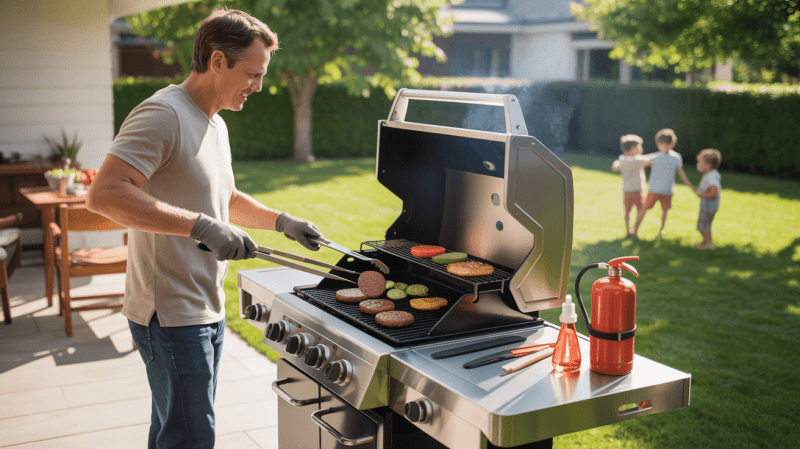When I started exploring outdoor cooking, I quickly found myself debating: gas vs. wood-fired pizza grills. Many people, like me, want to make tasty homemade pizzas outdoors. It's essential to select the right grill that suits your cooking style, taste, and lifestyle.
Understanding the differences between gas and wood-fired grills is key. This will help you choose the one that fits your cooking dreams and daily life.

Key Takeaways
- Both gas and wood-fired grills offer unique cooking experiences.
- Gas grills provide convenience and quick setup.
- Wood-fired grills enhance flavor and authenticity.
- Temperature control is a critical factor to consider.
- Think about your cooking style and preferences.
Understanding Gas Pizza Grills
Gas pizza grills are a great choice for those who love making pizza at home but don't want to deal with a lot of effort. They are easy to use and consistently cook food. This makes it simple to make a variety of dishes quickly.
Benefits of Gas Pizza Ovens
One significant advantage of gas pizza grills is their rapid heating time. They can get hot much quicker than wood-fired ovens. This means you can prepare meals more quickly. Other benefits include:
- Ease of Cleanup: Gas ovens make cleaning up after meals much easier because they produce less soot and residue.
- Consistent Temperature: Gas grills maintain a steady cooking temperature, which is crucial for achieving a perfect pizza crust.
- Versatility: With a gas pizza grill, you can make more than just pizza. You can also cook roasted vegetables, casseroles, and a variety of other dishes.
- Fuel Options: You can choose between propane and natural gas, providing flexibility in your fuel selection.
Temperature Control
Being able to control the temperature is very important for making pizza. Gas pizza ovens let you adjust the heat precisely. This makes it easy to get the perfect temperature for different pizzas. Compared to wood-fired ovens, gas grills are better suited for this purpose because they eliminate the uncertainty of wood flames.
Exploring Wood-Fired Pizza Grills
Wood-fired pizza grills offer a unique way to cook outdoors. They bring the taste of Italy to your backyard. The smoky flavor from wood makes every bite special, unlike gas ovens.
Authentic Flavor and Experience
Wood-fired grills are known for their rustic taste. The flames and wood smoke make food taste amazing. It's not just for pizza; roasting veggies or meats is a treat.
High Cooking Temperatures
These grills can reach very high temperatures, exceeding 900 degrees Fahrenheit. This heat makes pizzas crispy and flavorful. It's great for cooking other dishes too, adding to their taste and texture.
| Feature | Wood-Fired Pizza Grill | Gas Pizza Oven |
|---|---|---|
| Authenticity of Flavor | Smoky, rich flavor | Less complex flavor |
| Temperature Range | Up to 900°F | Up to 700°F |
| Cooking Time | 2-5 minutes for pizza | 8-12 minutes for pizza |
| Versatility | Pizzas, meats, and vegetables | Pizzas, some meats |
Wood-fired pizza ovens create memorable moments. They make cooking outdoors special. It's a way to enjoy delicious food and time with loved ones.
Gas vs. Wood-Fired Pizza Grills: Which One is Right for You?

Choosing between a gas and wood-fired pizza oven can significantly impact your cooking experience. I think about cooking style, space, installation, and cost. This helps me pick the right pizza grill for me.
Consider Your Cooking Style
My cooking style helps me decide between gas and wood-fired grills. Gas grills are quick and convenient, making them great for preparing fast meals. Wood-fired grills offer a unique flavor, making them perfect for those who love to cook.
Space and Installation Requirements
Space is key when choosing a grill. Gas grills need less space and are easier to install. If space is limited, gas may be a better option. Wood-fired ovens require more space and ventilation.
Cost Considerations
Cost is important when picking a pizza oven. Gas grills are often more affordable to purchase initially. However, consider the long-term costs, such as fuel and maintenance. Wood-fired ovens may cost more upfront, but they can save money in the long run.
Cleaning and Maintenance Tips
Keeping your pizza grill clean is key to its longevity. I've learned that following specific cleaning tips for both gas and wood-fired ovens can make cooking more efficient. It also ensures your pizzas taste better.
Gas Pizza Oven Maintenance
Gas pizza ovens are easier to maintain than wood-fired ones. Start by checking the burner and ignition to ensure they function properly. Then, sweep out debris inside by removing the stone or grate and vacuuming or brushing it.
Wipe the outside with a damp cloth to remove grease and food. This keeps the grill looking good. Regular maintenance helps prevent problems and keeps the grill functioning properly.
Wood-Fired Pizza Oven Care
Wood-fired ovens need more care. The major challenge is the buildup of soot and ash after each use. Using seasoned wood helps because it burns cleaner and produces less soot.
After each use, clean out the ash and scrub the inside to keep it clean and free from debris. A regular care routine helps keep the oven in top shape. It ensures your pizzas cook perfectly and taste great.
Conclusion
Exploring gas and wood-fired pizza grills reveals that each has unique benefits. When choosing, I consider my cooking style, available space, and budget. Each grill has its perks, whether it's the ease of gas or the wood-fired taste.
Gas grills are great for their temperature control and ease of maintenance. Wood-fired grills, on the other hand, offer a traditional cooking feel. The choice depends on what I want from my outdoor cooking.
Reflecting on what I need helps me choose the right grill. Hybrid models are also worth considering. They let me use both grilling methods. This way, I can enjoy the best of both worlds.
Reflecting on my priorities reveals that the right grill can significantly enhance outdoor cooking. By considering the pros and cons, I can select the ideal grill. This ensures many enjoyable pizza nights ahead.
FAQ
Q: What are the primary differences between gas and wood-fired pizza grills?
Q: Are gas pizza grills suitable for all types of cooking?
Q: What are the advantages of using a wood-fired pizza oven?
Q: How do I choose between a gas and wood-fired pizza grill?
Q: What maintenance is required for gas pizza ovens?
Q: What type of maintenance is required for a wood-fired pizza oven?
Q: Can I use both a gas and wood-fired pizza grill?
DISCLAIMER
This document is provided for general information purposes only and should not be relied upon as providing legal advice, technical, or specific operational guidance to the reader, whether as to the practices described in the document or the applicable legal requirements and regulations. backyardgrillingpros.com expressly disclaims any responsibility for liability arising from or related to the use or misuse of any information in this document.

